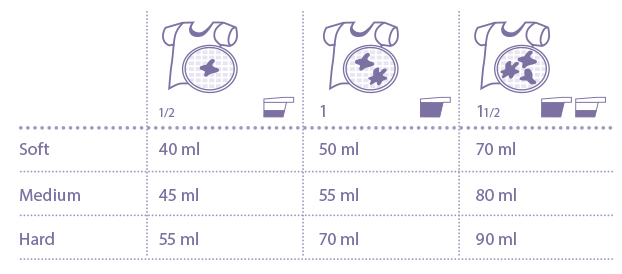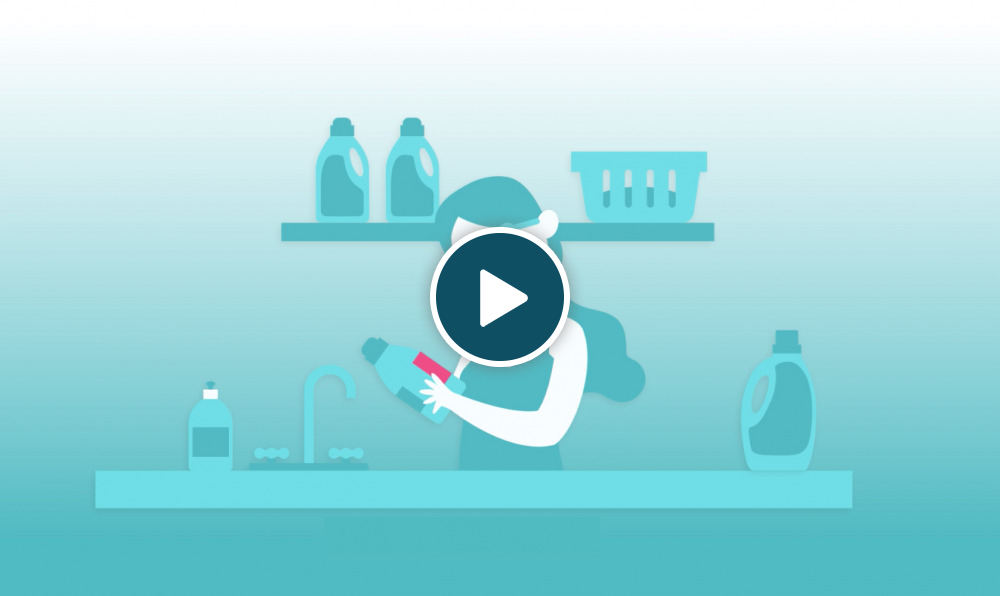How often have you heard the advice to always read the label. It’s important to take this seriously.
Labels are there to help you use a product safely and effectively. Detergents and maintenance products can contain hazardous ingredients and the label provides a lot of useful and important advice. So always read the label before using a product.
Cleaning and maintenance products labels contain several different pieces of information, all of them important and useful. To help you read and understand all this information more easily, watch the video. You can also read more about the different parts of the label below.
Safe use
To help you use products safely and complement the important hazard information prescribed by EU regulations, you will also find safe use guidance on the label that has been developed by the industry.
These safe use icons and phrases help you use and store household detergents and maintenance products safely. They can be found on the label and provide safe use instructions in a simple and user-friendly way.

Hazard information
Understanding hazard information
In Europe, the regulation on classification, labelling and packaging of chemicals – the CLP Regulation – regulates how household detergents and maintenance products labels must convey hazard information relating to the product, to help you handle and use the product safely.
The Regulation determines how household cleaning products are classified, based on the product’s potential impact on humans and the environment. Any products identified as hazardous must show the following on the label:
- a standardised hazard symbol and signal word
- hazard statements
- precautionary statements
- any other relevant information
The symbols and wording are there to draw your attention to hazards some products may pose. The information on the label refers to the concentrated product in the packaging: it does not refer to the product in use, i.e. diluted (e.g. when using a hand dishwashing detergent in 5 litres of water). Provided you use the products following the instructions on the label, you are not exposed to those hazards.
For more detailed information on the CLP regulation and pictograms, you can visit the website of the European Chemicals Agency.

Dosage
How much detergent should you use?
Most detergent brands will advise you on the optimal quantity of product to use for efficient cleaning results, whether it is laundry washing, floor cleaning etc. By following the directions on the label of your chosen product, you will be sure to get the best results while helping the environment.
Did you know that by using too much detergent, you are actually wasting resources (and money), and therefore not helping the environment? And by underdosing, you run the risk of the washing not coming out completely clean and possibly needing to re-wash, which would use additional water, energy and detergent.
Read more specific information about laundry detergent dosing.

Ingredients & allergens
'Every chemical ingredient in a product has a particular purpose. Certain ingredients give the product its cleaning properties, others might help it dissolve better in water or give it a pleasant fragrance or colour. It all adds up to a product that is easier to use and gets great results.
\r\nEU regulations specify how information on product ingredients should appear on labels.
\r\nThe Detergents Regulation sets rules for what ingredients information needs to be included on the labels of detergents. The main aim is to ensure that that you are aware of what’s in the detergent so that, should you or anyone in your family have an allergic reaction, you are able to make an informed choice when selecting a product. Ingredients are often grouped together in ingredient families on the label, with more detailed information available online.
\r\nThe Classification, Labelling & Packaging regulation specifies that a product label must provide the list of ingredients that have triggered the specific classification of the product.
\r\nWant to know more?
\r\n- \r\n
- Potential allergenic substances in a detergent product \r\n
- Potential allergies and irritations \r\n
- Role of ingredients in a product \r\n
- Principles of chemical safety assessment \r\n
UFI Code
Why the UFI code exists and where to find it
Accidents involving everyday chemical products can happen at any time and any place – especially if you have small children. In case of such an accident, seek immediate medical advice by contacting your local poison centre or in some cases your doctor.
On product labels, you will gradually find a 16-character UFI code (unique formula identifier) – you will be asked for this when you seek medical advice. The UFI code helps poison centres identify the product and its ingredients quicker so that you can get accurate advice faster.
The UFI code is already on the labels of many products - for example many cleaning products, paints, adhesives, and fertilisers. They can harm your health if they are not used correctly. By 2025, all of these products will have the UFI code – to help keep European citizens safe.
Other
What else can I find on the label?
Product labels also carry other useful information. They may show that the product complies with a certain sustainability scheme, such as the Charter for Sustainable Cleaning or the EU Ecolabel. Cleaning product labels often also carry tips on how to use the product sustainably and save water, CO2 and money.
You will also find the brand or manufacturer’s contact details, in case you want to contact them directly for more information, as well as the bar code and the weight of the product contents.
